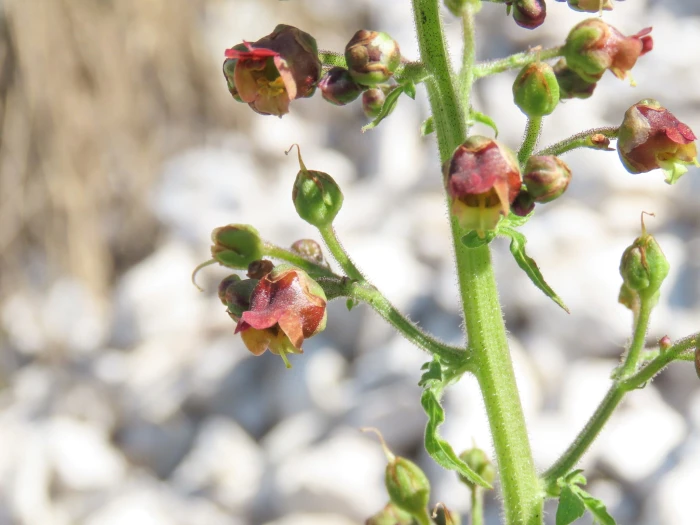Scopoli’s Figwort
(Scrophularia scopolii)
Scopoli’s Figwort (Scrophularia scopolii)
/
/

© Emanuele Santarelli
CC BY-SA 4.0
Image By:
© Emanuele Santarelli
Recorded By:
Copyright:
CC BY-SA 4.0
Copyright Notice:
Photo by: © Emanuele Santarelli | License Type: CC BY-SA 4.0 | License URL: http://creativecommons.org/licenses/by-sa/4.0/ | Uploader: esant | Publisher: iNaturalist |























Estimated Native Range
Climate Requirements
| • Precipitation | 31" - 58" |
| • High Temp. | 64°F - 81°F |
| • Low Temp. | 14°F - 32°F |
Summary
Scrophularia scopolii, commonly known as Scopoli’s Figwort, is a perennial herb native to a variety of habitats in Europe to the Caucasus, including open woodlands, forest edges, and grasslands. It exhibits a moderate growth rate, reaching a height of 2-3 feet (0.6-0.9 meters). This plant is characterized by its square stems and opposite leaves, with inconspicuous green to red flowers that bloom in the summer and are more interesting for their structure than their color. The flowers, while not showy, are attractive to pollinators such as bees.
Scopoli’s Figwort is valued for its medicinal properties, as it has been used traditionally to treat skin conditions and as a diuretic. It is suitable for naturalistic plantings, herb gardens, and as a border plant in cultivation. It thrives in full sun to part shade and prefers medium draining loam soils, with consistent moisture. While it is not particularly drought-tolerant, it can adapt to various soil conditions as long as they are well-drained. Scrophularia scopolii is generally disease-resistant, but it can occasionally suffer from rust or leaf spot. It is not known for being invasive and does not have aggressive roots, making it a safe choice for most garden settings.CC BY-SA 4.0
Scopoli’s Figwort is valued for its medicinal properties, as it has been used traditionally to treat skin conditions and as a diuretic. It is suitable for naturalistic plantings, herb gardens, and as a border plant in cultivation. It thrives in full sun to part shade and prefers medium draining loam soils, with consistent moisture. While it is not particularly drought-tolerant, it can adapt to various soil conditions as long as they are well-drained. Scrophularia scopolii is generally disease-resistant, but it can occasionally suffer from rust or leaf spot. It is not known for being invasive and does not have aggressive roots, making it a safe choice for most garden settings.CC BY-SA 4.0
Plant Description
- Plant Type:
- Height: 2-3 feet
- Width: 1-2 feet
- Growth Rate: Moderate
- Flower Color: Green, Red
- Flowering Season: Summer
- Leaf Retention: Deciduous
Growth Requirements
- Sun: Full Sun, Part Shade
- Water: Medium
- Drainage: Medium
Common Uses
Butterfly Garden, Low Maintenance
Natural Habitat
Native to open woodlands, forest edges, and grasslands
Other Names
Common Names: Scopoli’s Scrophularia
Scientific Names: Scrophularia scopolii
GBIF Accepted Name: Scrophularia scopolii